Golden Stool Of Ashanti People And Legend Of The Black Cloud Appearing In The Sky
A. Sutherland - AncientPages.com - The golden stool is sacred to the Ashanti people. It is a traditional symbol of leadership and a holy object that holds the souls of the Ashanti people, the living, the dead, and the unborn.
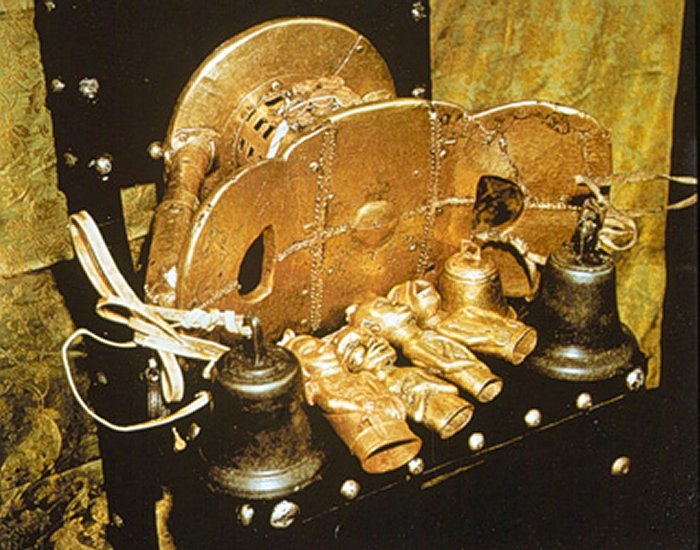 Golden Stool of the Ashanti Empire. Fair use image via Black Past
Golden Stool of the Ashanti Empire. Fair use image via Black Past
Even today, great pride in the Ashanti King lives on in the tradition of the Golden Stool.
Being carefully protected, the Golden Stool represents the worship of ancestors, well-being, and the nation of Ashanti. It symbolizes nationhood and contains the Soul of Ashanti (sumsum). In the mythology of the Ashanti people, the Sunsum is one's Spirit.
A Black Cloud Appeared In The Sky
The Golden Stool is the subject of a legend about how the King of the Ashanti was chosen by the tribe's supreme god, Nyame, whose name means "he who knows and sees everything" and "omniscient, omnipotent sky god."
Nyame decided that the Ashanti people were ready to become a mighty nation. However, this would only happen if the individual tribes selected one chief to lead them all. Nyame sent a magician and healer named Anotchi to visit the Ashanti chiefs. Suddenly, a black cloud appeared in the sky, and a golden stool was clearly seen inside it.
Anotchi commanded the stool to land in front of the man who should be King, and the stool placed itself before a chief named Osai Tutu, who became the first king of the Ashanti Kingdom in West Africa. The next step for Osai Tutu was to unify all people and give them a constitution, laws, and customs.
 An Akan stool believed to be for a Queen mother, 1940–1965, in the collection of the Children's Museum of Indianapolis. Image credit: The Children's Museum of Indianapolis - CC BY-SA 3.0
An Akan stool believed to be for a Queen mother, 1940–1965, in the collection of the Children's Museum of Indianapolis. Image credit: The Children's Museum of Indianapolis - CC BY-SA 3.0
The legend also tells that Anotchi called the divine Golden Stool a gift from the god Nyame to the Ashanti people. As the magician said, the stool would ensure good health, prosperity, and success for all the kingdom's people as long as the sacred object was kept safely in the royal palace. The item must be held with the strictest precaution and always protected.
According to the legend, if it is destroyed one day or captured by the enemies of the Asante Kingdom of Ghana, the whole kingdom will descend into chaos. However, it can be taken outside only on exceptional occasions, but it must never come in contact with the ground.
No one was allowed to sit on it, and even the Ashanti kings were instructed only to use it as a sacred symbol of their authority to rule Ghana.
Golden Stool - The Seat Of The Soul Of The Rightful Owner
In beliefs, each stool is considered the seat of the soul of the rightful owner, and when it is not used and stands against a wall, other souls passing by should not settle on it.
The royal throne can never touch the ground, so it is always on a blanket. The new King is lifted and lowered above the throne during the coronation without touching it. The throne is brought to the King because only the Asantehene (the absolute monarch of the Asante people and the historical Kingdom of Asante) has the right to touch it.
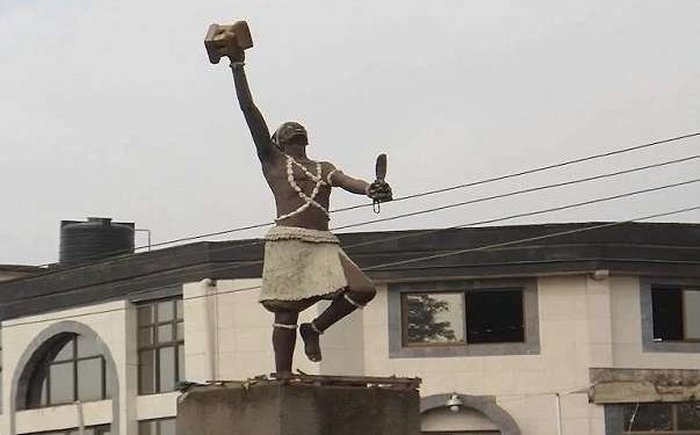 Anotchi commanded the stool to land in front of the man who should be King, and the stool placed itself before a chief named Osai Tutu, who became the first king of the Ashanti Kingdom in West Africa. Image source
Anotchi commanded the stool to land in front of the man who should be King, and the stool placed itself before a chief named Osai Tutu, who became the first king of the Ashanti Kingdom in West Africa. Image source
Tradition has it that not everyone could see the throne, and only the King and his trusted advisers knew where the throne was hidden. The stool is vital to the Ashanti, and they are ready to defend it even at the peril of their lives. They allowed the thirteenth king ruler of the Kingdom of Ashanti, Prempeh (1870 – 1931), to go into exile instead of surrendering the stool to Gov. Hogdson, the then-British governor.
The final war (1900) was prompted by Sir Frederick Mitchell Hodgson, the British Governor of the Gold Coast, to sit on the Golden Stool. The intense fighting led to the death of more than 2,000 Ashanti and 1,000 British and Allied troops.
Both totals were higher than the deaths from all previous Anglo-Ashanti wars combined. The war ended after six months, but the British never captured the Golden Stool.
Hidden by the Ashanti, it was accidentally found by a group of African railroad builders in 1920. They stripped it of its gold ornaments and were trialed by the Ashanti and sentenced to death.
After realizing the importance of the Golden Stool to the Ashanti, the British gave assurances that they would never interfere with it again.
Restored to its proper place, the Golden Stool continues to be used in rituals crowning the Asantehene, although he is now considered a traditional ruler without political power or influence.
Nonetheless, the Golden Stool remains a cherished symbol of the former Ashanti Empire.
Many Designs Of The Golden Stool But The Same Symbolic Meaning
The basic shape of Asante stools has been copied by other cultures and sold worldwide. Initially, each Golden Stool is made of a curved, single log of wood. It has a crescent-shaped seat, flat base, intricately made backrest, 46 cm high (18 inches), 61 cm (24 inches) wide, and 30 cm (12 inches) deep platform.
Its entire surface is decorated with gold and ringed with bells to warn the King of the danger. Today, the stool is one of the most important gathering points for the tribes. It symbolically demonstrates the continuity of succession to the throne and the strength of the entire nation.
Many kingdoms and chiefdoms in Africa had and continue to use stools instead of chairs as thrones.
According to the Ashanti tradition, the Golden Stool is symbolic because each throne is unique. It means it has a different meaning for the person whose soul sits on it.
There are many designs of this remarkable symbolic artifact, and some include animal patterns or depict images that recall the person who used it.
Written by – A. Sutherland - AncientPages.com Senior Staff Writer
Updated on January 2, 2024
Copyright © AncientPages.com All rights reserved. This material may not be published, broadcast, rewritten or redistributed in whole or part without the express written permission of AncientPages.com
Expand for referencesMore From Ancient Pages
-
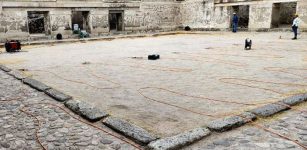 Has The Mysterious Ancient Underground Labyrinth Of Mitla Finally Been Found?
Archaeology | Aug 14, 2023
Has The Mysterious Ancient Underground Labyrinth Of Mitla Finally Been Found?
Archaeology | Aug 14, 2023 -
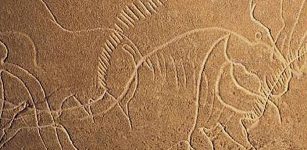 French Grotte de Cussac Cave Reveals Secrets On Life And Death 25,000-30,000 Years Ago
Archaeology | Jun 22, 2020
French Grotte de Cussac Cave Reveals Secrets On Life And Death 25,000-30,000 Years Ago
Archaeology | Jun 22, 2020 -
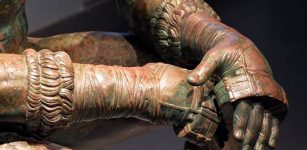 Boxer At Rest – Rare Sculpture And Masterpiece Of Hellenistic Bronze Art
Artifacts | May 21, 2021
Boxer At Rest – Rare Sculpture And Masterpiece Of Hellenistic Bronze Art
Artifacts | May 21, 2021 -
 Secret Tunnels Used By Knights Templar Leading To The Treasure Tower – Discovered
Archaeology | Oct 29, 2019
Secret Tunnels Used By Knights Templar Leading To The Treasure Tower – Discovered
Archaeology | Oct 29, 2019 -
 William Adams: The Journey To Becoming The First White Samurai
Featured Stories | Jul 11, 2018
William Adams: The Journey To Becoming The First White Samurai
Featured Stories | Jul 11, 2018 -
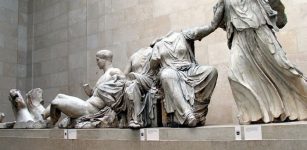 Parthenon Marbles: MEPs Call On Boris Johnson To Return Treasures To Greece
Artifacts | Nov 19, 2020
Parthenon Marbles: MEPs Call On Boris Johnson To Return Treasures To Greece
Artifacts | Nov 19, 2020 -
 Peculiar Bronze Mace Head Left By Unknown Ancient Culture Discovered In Poland
Archaeology | Jul 1, 2019
Peculiar Bronze Mace Head Left By Unknown Ancient Culture Discovered In Poland
Archaeology | Jul 1, 2019 -
 Mysterious Advanced Underground Civilization And A Secret Society – Astonishing Discovery And Connection – Part 1
Civilizations | Apr 21, 2018
Mysterious Advanced Underground Civilization And A Secret Society – Astonishing Discovery And Connection – Part 1
Civilizations | Apr 21, 2018 -
 Large Underwater Site That Was Home To 500,000 People About 14,000 Years Ago Identified Northwest Of Australia
Earth Changes | Jan 17, 2024
Large Underwater Site That Was Home To 500,000 People About 14,000 Years Ago Identified Northwest Of Australia
Earth Changes | Jan 17, 2024 -
 Mysterious Underground City In Brazil Could Re-Write Ancient History – Unexplained Artifacts And Skeletons – Part 1
Featured Stories | Jan 23, 2022
Mysterious Underground City In Brazil Could Re-Write Ancient History – Unexplained Artifacts And Skeletons – Part 1
Featured Stories | Jan 23, 2022 -
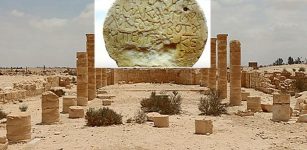 Tombstone With Ancient Greek Inscription Unearthed Near Nitzana In The Negev, Israel
Archaeology | Jan 8, 2021
Tombstone With Ancient Greek Inscription Unearthed Near Nitzana In The Negev, Israel
Archaeology | Jan 8, 2021 -
 Spectacular Chand Baori Stepwell Of India That Resembles Reversed Pyramid
Featured Stories | Jul 14, 2015
Spectacular Chand Baori Stepwell Of India That Resembles Reversed Pyramid
Featured Stories | Jul 14, 2015 -
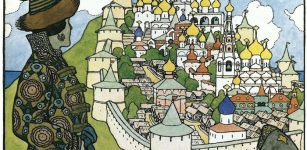 Sacred Hidden Buyan Island And The Mysterious Alatyr Stone With Healing Powers May Have Existed
Featured Stories | Mar 22, 2018
Sacred Hidden Buyan Island And The Mysterious Alatyr Stone With Healing Powers May Have Existed
Featured Stories | Mar 22, 2018 -
 Jolabokaflod – Iceland’s Wonderful Christmas Book Flood Tradition – Exchange Books As Christmas Eve Presents And Spend The Evening Reading
Ancient Traditions And Customs | Dec 21, 2017
Jolabokaflod – Iceland’s Wonderful Christmas Book Flood Tradition – Exchange Books As Christmas Eve Presents And Spend The Evening Reading
Ancient Traditions And Customs | Dec 21, 2017 -
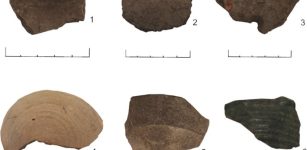 Earliest Evidence Of Wine Consumption In The Americas Found In Caribbean
Archaeology | May 23, 2023
Earliest Evidence Of Wine Consumption In The Americas Found In Caribbean
Archaeology | May 23, 2023 -
 A Unique Look Inside An Ancient Home In Pompeii Re-Constructed With Virtual Reality
News | Mar 26, 2022
A Unique Look Inside An Ancient Home In Pompeii Re-Constructed With Virtual Reality
News | Mar 26, 2022 -
 Puzzling Connection Between Native Americans And Lost Northern European Race Could Re-Write History
Civilizations | Apr 14, 2018
Puzzling Connection Between Native Americans And Lost Northern European Race Could Re-Write History
Civilizations | Apr 14, 2018 -
 Smuggled 1,800-Year-Old Lydian Atonement Inscription Sent Back To Turkey By Italy
Artifacts | Sep 28, 2020
Smuggled 1,800-Year-Old Lydian Atonement Inscription Sent Back To Turkey By Italy
Artifacts | Sep 28, 2020 -
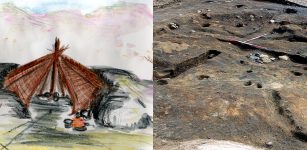 Stone Age People Lived In Reused Houses – Not Just Caves – Discovery In Norway Reveals
Archaeology | Jan 26, 2018
Stone Age People Lived In Reused Houses – Not Just Caves – Discovery In Norway Reveals
Archaeology | Jan 26, 2018 -
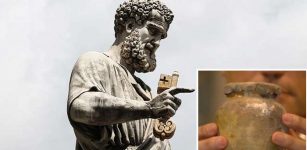 Are Bones Of Apostle Peter Hidden Inside A 1000-Year-Old Roman Church?
Archaeology | Sep 16, 2017
Are Bones Of Apostle Peter Hidden Inside A 1000-Year-Old Roman Church?
Archaeology | Sep 16, 2017
